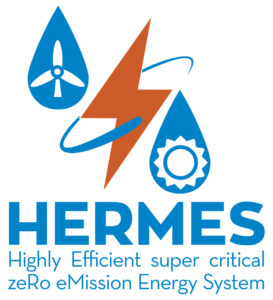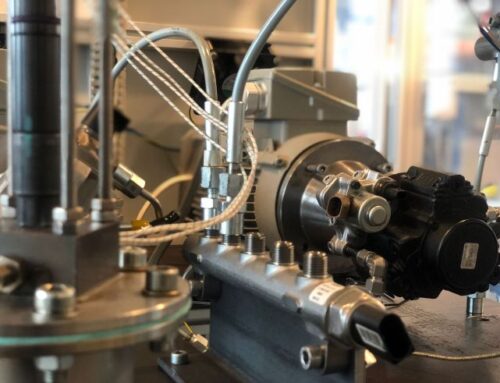TEC4FUELS further develops HiL concepts
16 July 2024 – TEC4FUELS is currently further developing its concept for dynamic hardware-in-the-loop (HiL) testing to ensure the compatibility of energy sources and the materials of technical components. The range of possible applications of the test procedure is currently being demonstrated in the EU research project HERMES, in which TEC4FUELS is testing commercially available GDI injectors (Gasoline Direct Injection), with methanol under supercritical CO2 conditions. The test was successful, as the injectors operated for 200 hours in the CO2 atmosphere at an injection pressure of 100 bar.
For this test, TEC4FUELS modified a hardware-in-the-loop test bench so that it has a high-pressure tank and an injection chamber that are filled with supercritical CO2. As the main focus of the tests is on the injector itself, conventional and commercially available components from the high-performance injection system are used for the high-pressure pump, the pre-pressure pump and the rail. The fuel is pumped through the components in a circuit in order to permanently load the injector and finally to investigate the effect of methanol on the injector. The temperature of the injector nozzle is increased to up to 300 °C in order to simulate the effect of a gas turbine combustion chamber. This principle simulates real-life operation and enables potential problems in the interaction of the fuel system to be identified. This approach also avoids excessive fuel consumption.
The HERMES energy system consists of a gas turbine that can operate with interchangeable renewable fuels such as liquid methanol or gaseous hydrogen, and uses supercritical carbon dioxide or xenon as a carrier medium (Super Critical Fluid, SCF). Due to its high density, the compression work of the gas turbine system is significantly reduced, leading to a major increase in electrical efficiency. Excess electricity generated by wind or solar energy is used to synthesize methanol or hydrogen using carbon dioxide and water separated from the combustion products. This ensures a closed renewable carbon cycle. The pure oxygen produced in this process is stored and used for combustion in the supercritical gas turbine. As only pure oxygen and sulphur-free fuels are burned, HERMES produces no pollutants.
More information at https://hermes-energy.eu/

The EU research project “HERMES” is funded by the European Union within the framework of the research and innovation program HORIZON EUROPE under the grant number 101083748.
The HERMES-Consortium
- Universiteit Twente
- Ethnocon Metsovion Polytechnion
- Exergia Energy and Environment Consultants AE
- TEC4FUELS GmbH
- OWI Science for Fuels gGmbH
- Imperial College of Science Technology and Medicine
- CERFACS, Centre Européen der Recherche et de Formation Avancée en Calcul Scientifique
- Paul Scherrer Institut
- OPRA Engineering Solutions B.V.
- Ecole Polytechnique Fédérale de Lausanne
- Politechnika Wroclawska






